
Adventure is a video game developed by Warren Robinett for the Atari Video Computer System and released in 1980 by Atari, Inc. The player controls a square avatar whose quest is to explore an open-ended environment to find a magical chalice and return it to the golden castle. The game world is populated by roaming enemies: three dragons that can eat the avatar and a bat that randomly steals and hides items around the game world. Adventure introduced new elements to console games, including enemies that continue to move when offscreen.

Pitfall! is a video game developed by David Crane for the Atari 2600 and released in 1982 by Activision. The player controls Pitfall Harry, who has a time limit of 20 minutes to seek treasure in a jungle. The game world is populated by enemies and hazards that variously cause the player to lose lives or points.

Shamus is a shooter with light action-adventure game elements written by Cathryn Mataga and published by Synapse Software. The original Atari 8-bit computer version was released on disk and tape in 1982. According to Synapse co-founder Ihor Wolosenko, Shamus made the company famous by giving it a reputation for quality. "Funeral March of a Marionette", the theme song from Alfred Hitchcock Presents, plays on the title screen.

Synergistic Software was a video game developer based in Seattle. Founded in 1978, the company published some of the earliest available games and applications for the Apple II family of computers. They continued developing games for various platforms into the late 1990s.
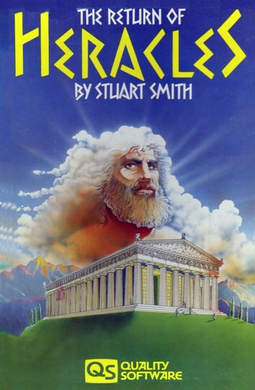
The Return of Heracles is a role-playing video game for the Atari 8-bit computers, Commodore 64 and Apple II. It was written by Stuart Smith and published by Quality Software in 1983. Following Smith's adventure role playing games Fracas and Ali Baba and the Forty Thieves, and built on an engine that was a precursor to Adventure Construction Set, The Return of Heracles is set in the age of Greek myth and allows the player to assume the role of one or more heroes and attempt various quests.
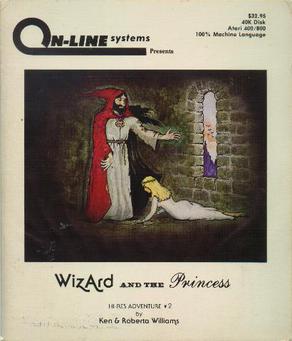
Wizard and the Princess is a graphic adventure game written for the Apple II and published in 1980 by On-Line Systems. It is the second installment in the Hi-Res Adventures series after Mystery House. Unlike its predecessor, which featured monochrome drawings, Wizard and the Princess introduced color graphics. Ports for the Atari 8-bit computers and Commodore 64 were released in 1982 and 1984 respectively. The 1982 self-booting disk version for IBM PC compatibles was renamed Adventure in Serenia.
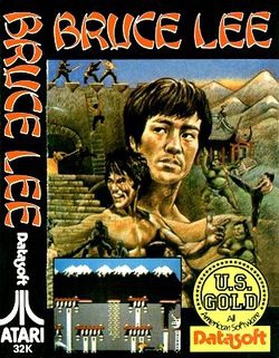
Bruce Lee is a platform game written by Ron J. Fortier for Atari 8-bit computers and published in 1984 by Datasoft. The graphics are by Kelly Day and music by John A. Fitzpatrick. The player takes the role of Bruce Lee, while a second player controls either Yamo or alternates with player one for control of Bruce Lee.

Superman: The Game is a 1985 video game designed by Fernando Herrera and published in the US by First Star Software for the Commodore 64. For European release, Superman was ported the Acorn Electron, Amstrad CPC, Atari 8-bit computers, BBC Micro, and ZX Spectrum.

Transylvania is an adventure video game published by Penguin Software. It was released for the Apple II in 1982 followed by ports to the Atari 8-bit computers and Commodore 64. A Mac conversion was published in 1984, then versions for the Amiga, Atari ST, and MS-DOS in 1985.

Preppie! is an action video game for Atari 8-bit computers published by Adventure International in 1982. It was programmed by Russ Wetmore of Star Systems Software, whose name is prominently displayed on the box cover. Leaning on the preppy trend of the early 1980s, the game follows prep schooler Wadsworth Overcash as he navigates the hazards of a country club to retrieve golf balls. Preppie! borrows heavily from Konami's Frogger, with lanes of traffic in the bottom half of the screen and a river crossing the top portion. Alligators are an element from both Frogger and preppy fashion; an open-mouthed gator is the icon of shirt brand Izod. Reviewers recognized the game as derivative, but called the music and visuals some of the best for Atari 8-bit computers.
Russ Wetmore is an American programmer and video game designer best known for writing commercial games and applications for Atari 8-bit computers in the early to mid 1980s. His Frogger-inspired Preppie! was published by Adventure International and praised by reviewers for the music and visuals. He also wrote the maze-game sequel, Preppie! II. Wetmore stopped writing games after the video game crash of 1983 and developed the integrated HomePak productivity suite for Batteries Included. He has remained in software development in director and architecture roles.

Adventure in Time is a text adventure written by Paul Berker for the Apple II. It was published in 1981 by Phoenix Software, followed by a version for Atari 8-bit computers in 1983.

Empire of the Over-Mind is an interactive fiction game written by Gary Bedrosian and published by Avalon Hill for the Apple II, Atari 8-bit computers, and TRS-80 in 1981. A version with an enhanced display for IBM PC compatibles by Bedrosian was published in 1986.

Stone of Sisyphus is a 1981 video game developed by Chameleon Software for the Apple II, Atari 8-bit family, and TRS-80, and published by Adventure International.
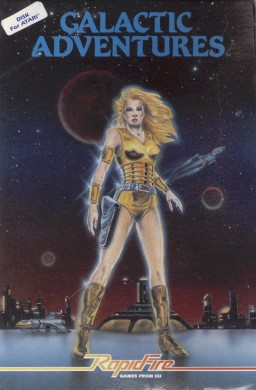
Galactic Adventures is a 1982 video game published by Strategic Simulations for the Apple II and Atari 8-bit family.
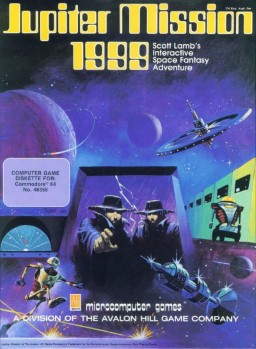
Jupiter Mission 1999 is an action-adventure game written by Scott Lamb for the Atari 8-bit family and published by Avalon Hill Microcomputer Games in 1983. The game shipped on four floppy disks. It was followed by a sequel in 1984, Quest of the Space Beagle.

Lunar Lander is a 1980 video game published by Adventure International.

Valley of the Kings, subtitled A Graphics Adventure, is a video game written by Thomas M. Krischan for Atari 8-bit computers and published by Dynacomp in 1982.
Movie Maker is a computer program published by Reston Publishing Company in 1984 which allows users to author animated visual sequences with audio. Self-playing movies can be viewed without the Movie Maker software. It was developed by Interactive Picture Systems for Atari 8-bit computers. In 1985 it was re-published by Electronic Arts, including a port to the Commodore 64.

Action Quest is a video game written by Jack Verson for Atari 8-bit computers. It was published in 1982 by his company, JV Software. Action Quest combines real-time action with puzzle solving as the player explores 30 rooms in an attempt to collect 20 treasures. Reviewers found the combination to be different from how puzzles in games—such as graphic adventures—worked at the time.


















